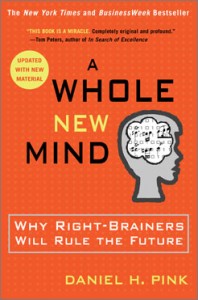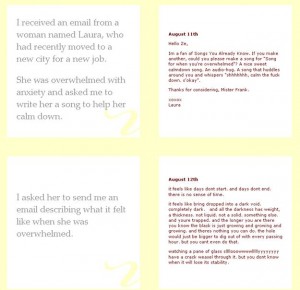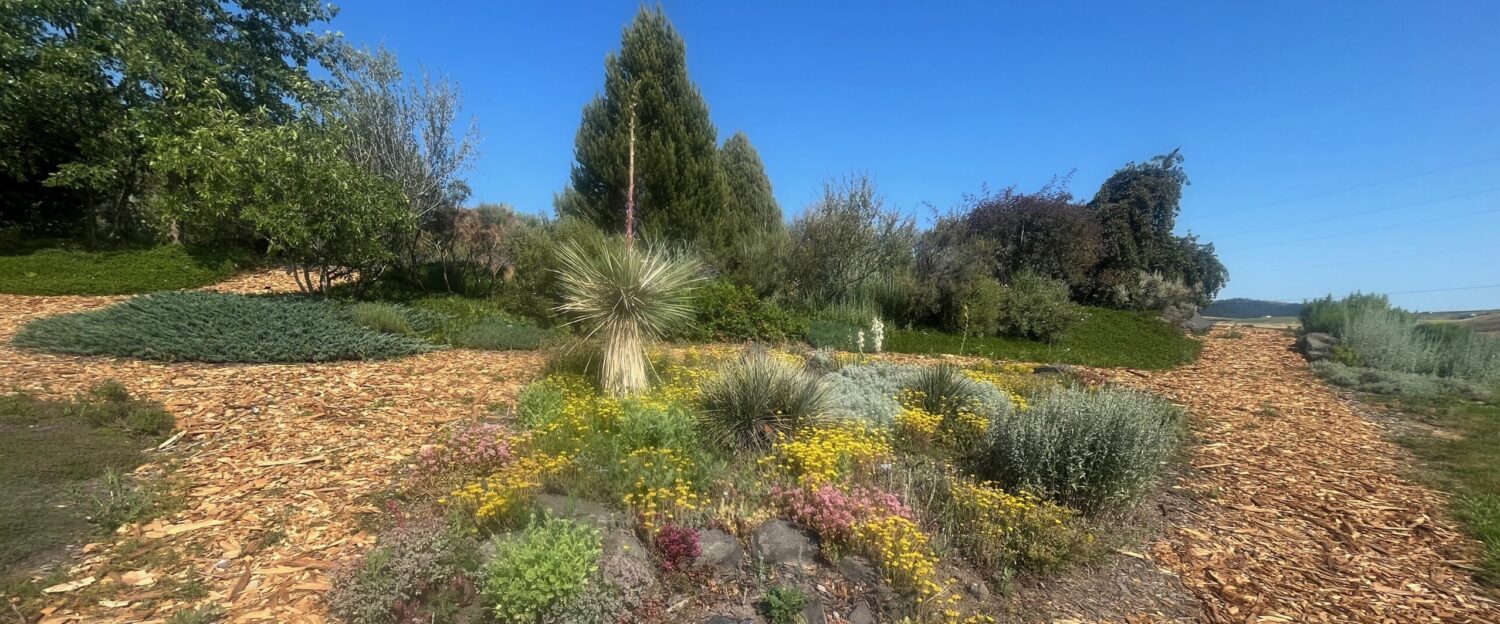 My fall 2011 class was inspired in large part by Daniel Pink’s book A Whole New Mind: Why Right-Brainers Will Rule the Future. What I love about Daniel Pink’s book is that half of the book is also a handbook. He offers activities as suggestions for developing specific types of creativity. Thus far, the students have blogged about Symphony and Play (see, for example, “Cutting Out Excess” and “Playing with Comics”).
My fall 2011 class was inspired in large part by Daniel Pink’s book A Whole New Mind: Why Right-Brainers Will Rule the Future. What I love about Daniel Pink’s book is that half of the book is also a handbook. He offers activities as suggestions for developing specific types of creativity. Thus far, the students have blogged about Symphony and Play (see, for example, “Cutting Out Excess” and “Playing with Comics”).
I have, in the past, recommended the book to my engineering students at Georgia Tech. It’s not enough to be good at math, science, and engineering. Creativity, innovation, and creative thinking are absolutely paramount to achieving any kind of great success in their fields. (Even the university’s Strategic Plan acknowledges this need.)
The Process
I didn’t know it at first, but Ze Frank (multimedia, social media comedian), was also going to be inspiration for the course. At the last minute, on the first day of class, I decided to show my students Ze Frank’s Chillout song. While the resulting song is good, what makes it really good is listening to the song after reading through the process. 
Ze shows us how the idea for the song was born: an audience member writes that she feels lonely and wishes he could write a song for her. Ze then proceeds to create a chorus, which he sends out to a small group of people, and asks them to record themselves singing along.
The final result of all this multimodal collaboration: a chorus of strangers telling this one lonely woman, “hey, you’re okay, you’ll be fine, just breathe.” Over and over again. The power is ultimately in this idea that strangers want this woman to feel okay, and maybe these strangers want me to feel okay too. A sense of goodwill emanates from the song and the chorus of voices.
Major lesson achieved on day 1: the secret is in the process, not the product. I realized right away that this song project would serve as the foundation for what would become their “Invention Mobs.”
The Experiment
On the third day of class, the invention mobs began. I asked students to bring a handmade object to serve as inspiration for the activity. The activity was inspired by a technique mentioned in Cameron Herold’s TED Talk “Let’s Raise Kids to Be Entrepreneurs.” Herold suggests that instead of telling your kids stories, that you give them three objects and ask them to tell you a story. I’ve tried this out with my own nieces and nephews with great success.
Why shouldn’t I try it in the college classroom? The power of play is gaining traction in the workplace and in the classroom.
Time was limited. Students had 25 minutes to group up and craft a creative work out of their objects. Most students, because of the example that I gave them, went with the story option. The last 25 minutes were spent presenting their stories to the class. I insisted at the last minute that they incorporate nonverbal actions into their storytelling. And they did.
The result: I watched students tell silly stories, acted out in silly ways in front of a class of peers, on the third day of their first year at college.
While I worried that the activity lacked substance or was too immature, I found that we had achieved a very clear objective: make something together and engage in spontaneous fun with your classmates. Rather than “show and tell,” they presented their own version of “make and show.”
The Project
This exercise was to serve as the foundation for what would eventually be called their “Invention Mobs.” I posed Ze Frank’s Chillout song and the experimental class activity as exemplars of multimodal, collaborative, creative projects. I challenged my students to use these examples as inspiration for organizing their own projects.
Perhaps the projects could have gone off without of hitch had I stopped there. But I insisted that their creative process include the contributions of strangers. It sounds simple enough, but many students have really struggled to get strangers to willingly (and preferably, joyfully) contribute to their projects (see, for example, “Stranger Danger”). Other student groups experienced some success (see “Creation Flows”). At the same time, I think this added challenge has made all the difference.
Students are nearing the final culmination of their projects, and I look forward to posting the results.
